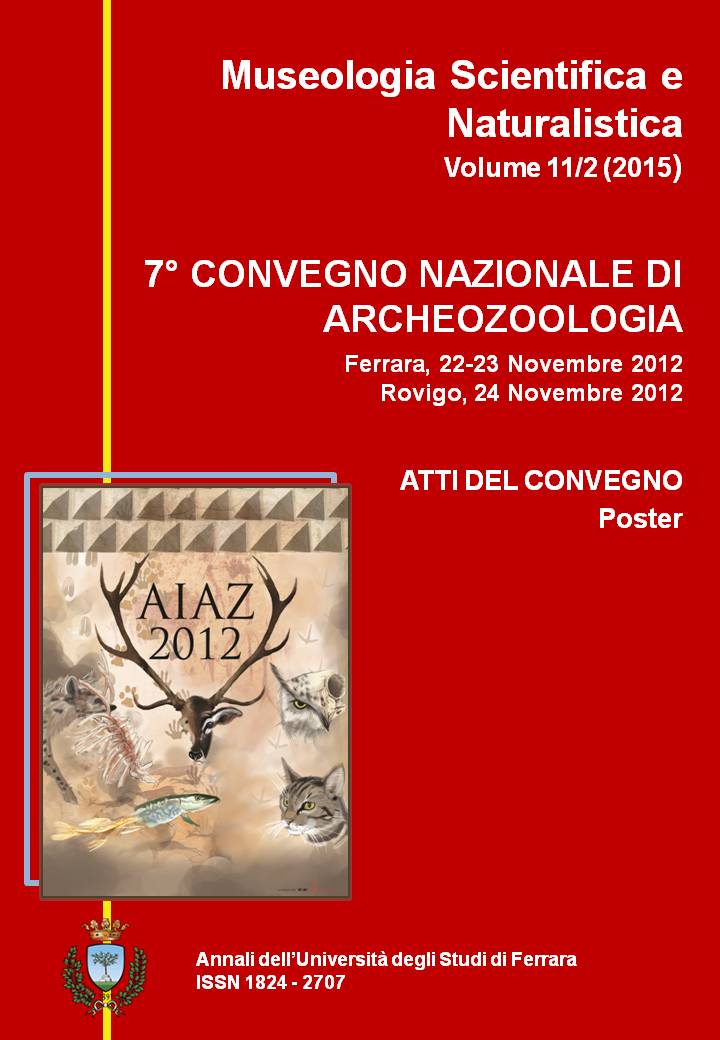Analisi archeozoologica, anatomo-patologica e biomeccanica su un Equus asinus L.: il caso di Palazzo Poggi (Lucca)
DOI:
https://doi.org/10.15160/1824-2707/1000Abstract
Riassunto - L’ambiente T dello scavo urbano di Palazzo Poggi (Lucca) inquadrabile cronologicamente tra il VI ed il IX sec. d.C. ed identificato come area di macellazione ha restituito reperti osteologici riferibili ad un esemplare maschio di 5 anni di Equus asinus L. affetto da patologie a livello di scapola, vertebre toraciche, lombari e prima falange anteriore.
Le osservazioni anatomo-patologiche hanno fornito il quadro clinico di un animale con gravi problemi deambulatori, probabilmente dolorante, che in vita doveva aver compiuto un’azione di traino di carichi pesanti e mal distribuiti, eseguendo un movimento di rotazione continua.
I risultati di uno sconsiderato uso lavorativo associati a tracce di macellazione interni alla mandibola e di scarnificazione sulla diafisi del metatarso suggeriscono che questo soggetto sia stato, probabilmente, sfruttato fino alla morte e dopo macellato oppure che, ormai inutilizzabile per qualsiasi attività, sia stato abbattuto e, dopodiché, macellato. Entrambe le ipotesi rimandano ad una società estremamente provata dal momento che numerose fonti attestano che gli equidi venissero macellati solo in situazioni estreme, purché non affetti da malattie contagiose, per non compromettere in alcun modo la forza lavoro.
Summary - Archaeozoological, anatomical, pathological and biomechanical analysis of a donkey (Equus asinus L.): the case of Palazzo Poggi (Lucca, Tuscany)
In the room T of the urban excavation site of Palazzo Poggi (Lucca, Tuscany), dating from the 6th to the 9th century A.D, identified as slaughtering area, some osteological fragments of a 5 years old male donkey (Equus asinus L.) were found. Fragments analysis revealed some pathologies in the left scapula, in the thoracic and lumbar vertebrae, and in the first left phalanx of anterior limb.
Pathological observations provided clinical evidence of serious walking impairment and probable pain, and allow us to affirm that the animal (Equus asinus L.) carried out an intensive work, loading excessive and badly distributed weights, and performing a continuous rotatory movement.
Phatological evidence, associated with slaughtering cuts made across the jaw and marks of scarification of the diaphysis of the metatarsal bone, suggest that the exploitation of this animal subsisted until its death. In fact, it is reasonable to argue that the slaughtering of the animal just coincided with his working incapacity. This hypothesis can be also confirmed by historical sources attesting that Equids were slaughtered only in extreme situations, in order to exploit their workforce as long as possible.



